The Unsung Heroes of Sustainability: Cal Poly’s Legacy in HVAC Innovation
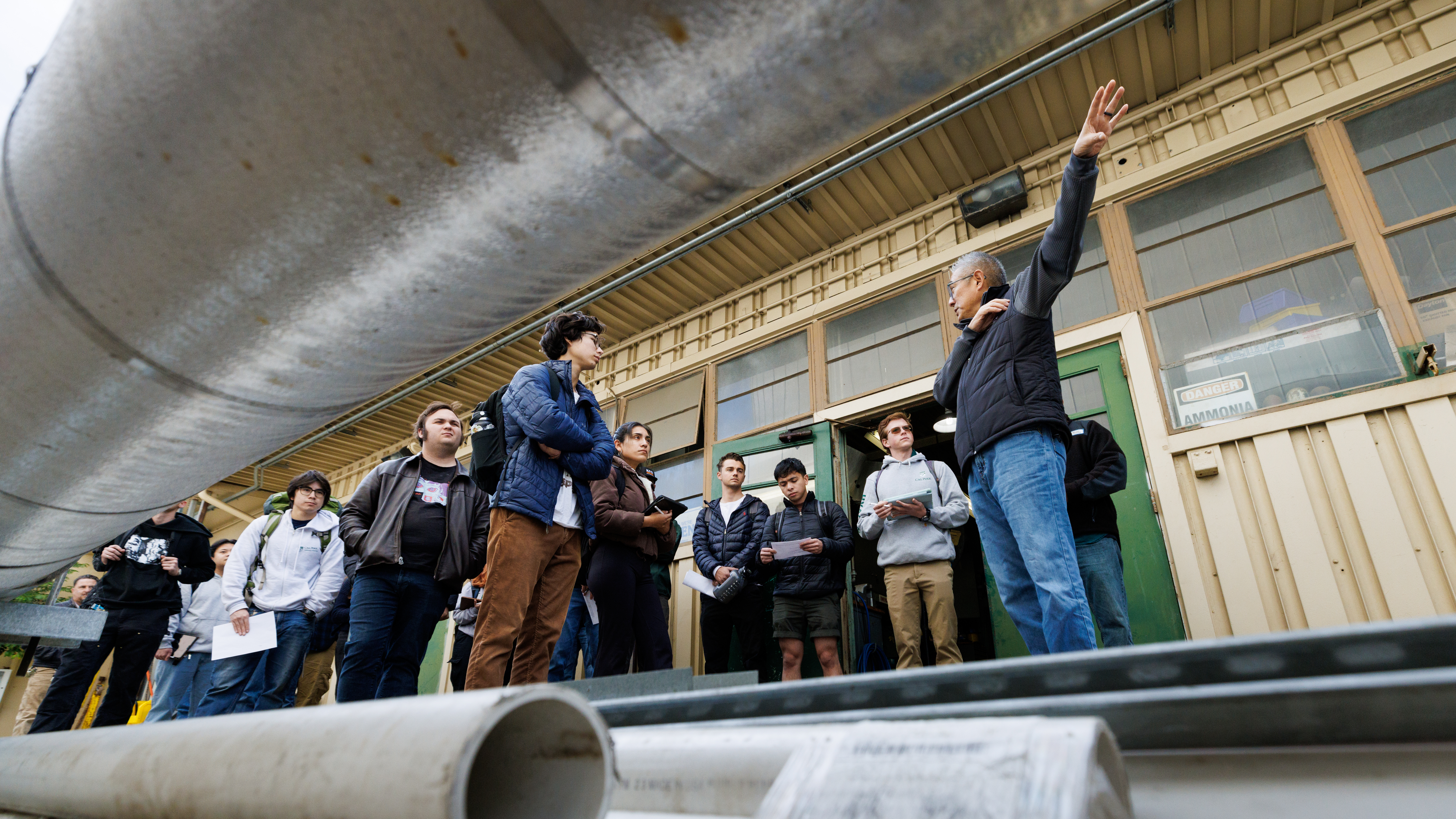
Max Scott never expected heating, ventilation, air conditioning and refrigeration (HVAC&R) to reshape his understanding of engineering. Like many students, he arrived at Cal Poly focused on renewable energy, giving little thought to the systems that heat and cool buildings. Then a professor urged him to check out a club mixer, and everything changed.
“I’ll be honest, I had the same stigma about HVAC as a lot of people,” said Scott, a mechanical engineering senior. “I thought it was kind of boring.”
But that first meeting with Cal Poly’s ASHRAE student club, the campus branch of the American Society of Heating, Refrigerating and Air-Conditioning Engineers, shifted his perspective. What he assumed was a niche technical field turned out to be a dynamic industry built on innovation and a strong professional network.
The more Scott engaged, the more he saw HVAC&R’s far-reaching impact. Touring job sites and talking with industry mentors, he came to understand it wasn’t just about air ducts and cooling systems — it was integral to sustainability. Engineers are rethinking how buildings use energy, and since buildings are responsible for 40% of global carbon emissions, HVAC&R systems play a critical role in cutting that footprint.
“I didn’t realize how big HVAC really is until I saw it firsthand,” said Scott, now president of ASHRAE at Cal Poly and a student in the HVAC&R concentration. “It’s everywhere, shaping sustainability in ways I never expected.”
Scott wasn’t just exploring a new field. He was stepping into a legacy that Cal Poly has been shaping for generations.
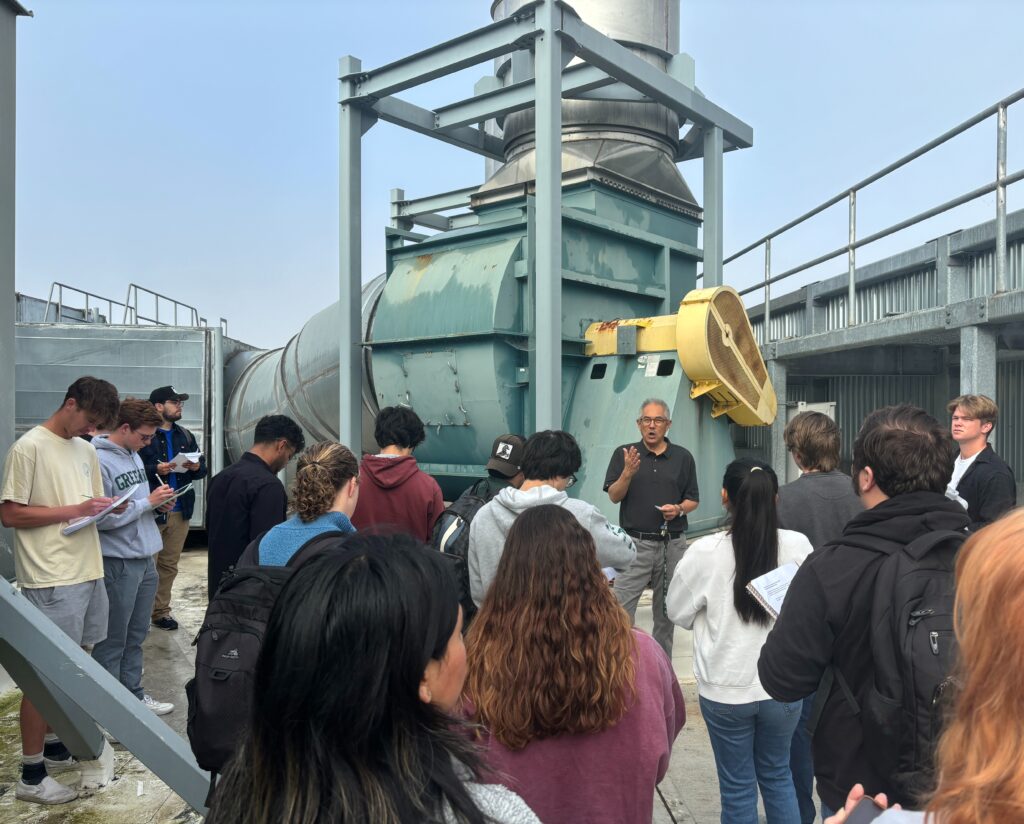
• • •
Cal Poly has been a leader in HVAC education for nearly a century. Air conditioning courses began in 1936, leading to one of the nation’s first air conditioning engineering degree programs by 1940. The first four-year graduates followed in 1942, establishing a foundation that continues to shape the field today.
By 1956, HVAC students had formed the Air Conditioning and Refrigeration Club, which became Cal Poly’s ASHRAE student branch in 1960. Today, it remains the longest-standing ASHRAE student branch in the world, continuing its tradition of applied learning and industry connections.
During one of ASHRAE’s industry trips, Scott and his fellow members saw their coursework come to life at SoFi Stadium. They weren’t just admiring the $5 billion venue towering above them — they were examining the systems that make it work. Guided by engineers from ACCO Engineered Systems, they traced the intricate network of heating, cooling and ventilation responsible for keeping more than 70,000 fans comfortable.
“That’s when I realized just how much thought goes into these systems,” Scott said.
Beyond the classroom, ASHRAE gives students a front-row seat to their future careers, combining site visits with hands-on experiences. Field trips to sites like SoFi Stadium and Diablo Canyon offer a firsthand look at large-scale HVAC&R infrastructure, while competitions like the Net-Zero Design/Construction-A-Thon push students to apply their knowledge, developing energy-efficient building solutions alongside industry mentors.
That early exposure to the field naturally builds professional connections. Many alumni credit the club for launching their careers, and in turn, they return as mentors, speakers and recruiters, continuing the cycle of support.
“Everywhere you go, you run into Cal Poly grads,” Scott said. “The connections are incredible.”
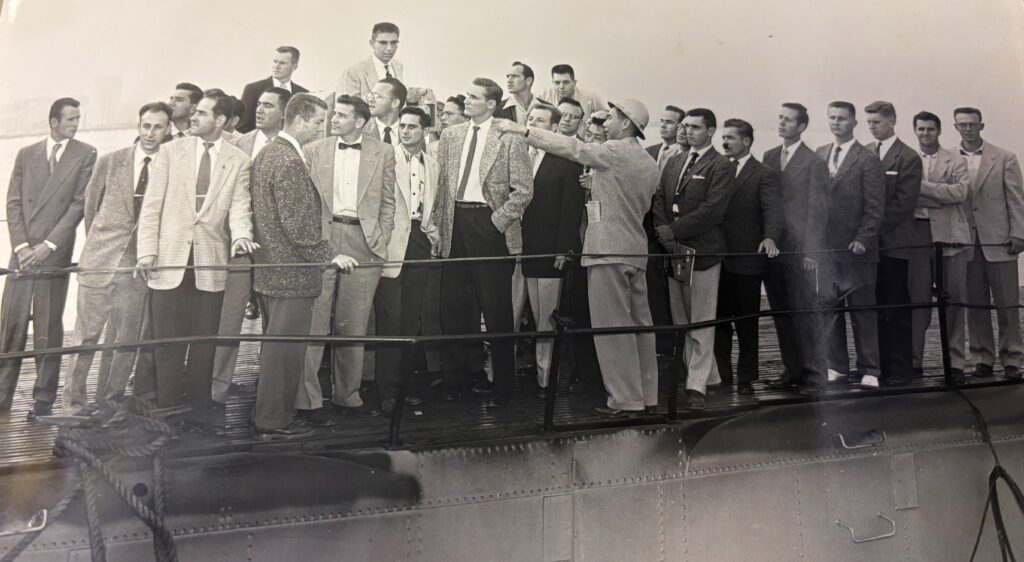
• • •
Joe Chin is one of those grads. Nearly 25 years ago, he was a mechanical engineering student, ASHRAE club president and an aspiring engineer eager to break into the field. Now vice president at Western Allied Mechanical, he’s spent years supporting students and shaping the industry.
One of his most impactful contributions to Cal Poly is the Net-Zero Design/Construction-A-Thon, where students apply their skills in energy-efficient building projects. Chin has helped organize and judge the event for years, and this year, he was back at Cal Poly, standing alongside fellow alumni who helped launch the competition and are now mentoring future engineers.
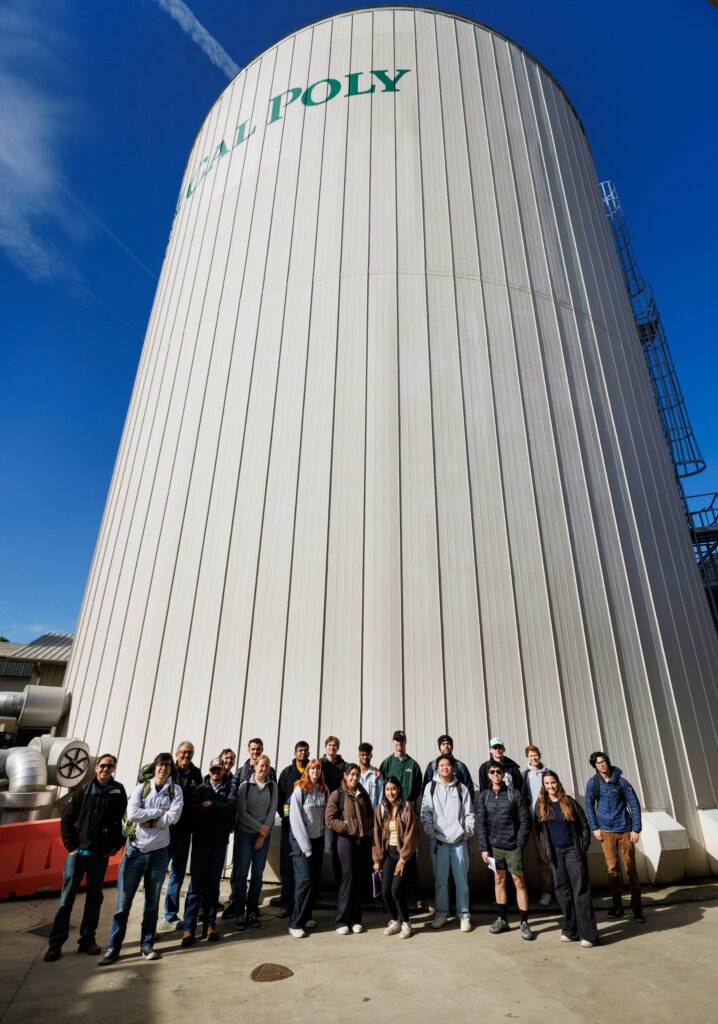
“It’s a full-circle moment,” Chin said. “I know how valuable these experiences are because I was in their position. ASHRAE gave me a direct connection to the field, and now I get to help students build those same relationships.”
That pipeline between Cal Poly and the field has only strengthened. “Cal Poly grads are leading this industry at every level,” Chin said. “They’re not just engineers. They’re project managers, business owners and decision-makers shaping the future of sustainability.”
Chin’s own path is proof of that growth. After graduating, he remained deeply involved in ASHRAE, holding leadership roles at regional and international levels. Today, while leading major HVAC projects in Northern California, he remains closely connected to Cal Poly, having served as co-chair of the HVAC&R Industry Advisory Board and continuing to support the program that shaped his career.
Across the industry, Cal Poly alumni are driving innovation — advancing sustainability efforts, managing teams and preparing the next generation of leaders.
• • •
Even as Cal Poly continues to supply top talent to the HVAC&R field, the industry itself is evolving. With the built environment shifting toward decarbonization and electrification, demand for innovative HVAC solutions is at an all-time high. That shift is reshaping the profession, and Cal Poly graduates are stepping up to meet it.
Jennifer Mott, a mechanical engineering professor, ASHRAE club adviser and Cal Poly alumna, has seen how rapidly HVAC education is evolving to keep pace with industry demands. “Students today are not just being taught how systems work. They are learning how to rethink them for a carbon-neutral future,” she said.
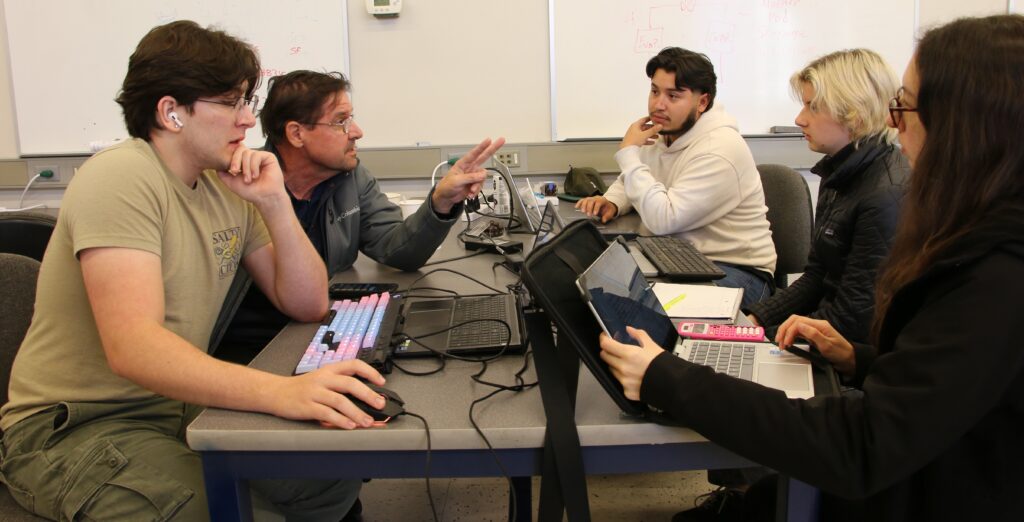
Employers increasingly seek engineers who can bridge technical expertise with sustainability goals. “Companies need more than engineers who can design systems. They want professionals who understand efficiency regulations electrification and long-term energy strategies,” said Lauren Rueda, a Cal Poly lecturer and ASHRAE adviser.
Mechanical engineering lecturer Larry Sun leads students on a tour of Cal Poly’s
Central Plant, highlighting the facility’s water tower, which plays a crucial role in the campus’s heating, ventilation, air conditioning (HVAC) and water systems.
That shift is also changing who enters the field. ASHRAE is one of the most diverse student organizations on campus, and more women are stepping into leadership roles. This year, Mott and Rueda took five female officers to the inaugural Women in ASHRAE Leadership Symposium in Chicago, a sign of how the industry is evolving. “There’s a growing awareness that diverse perspectives strengthen engineering solutions,” she said.
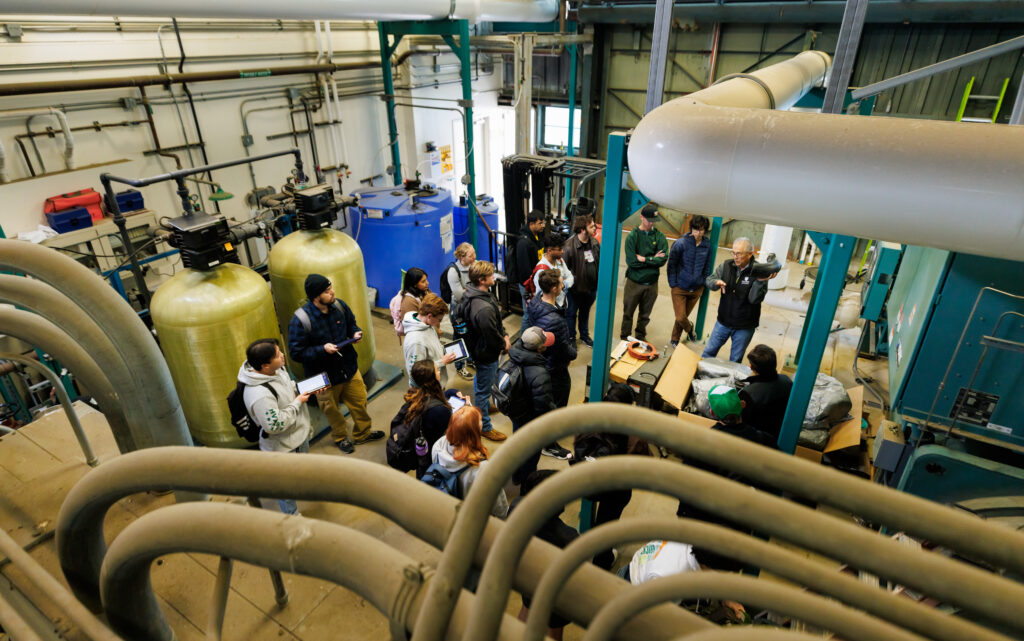
As the field diversifies, the next generation of HVAC&R engineers is not only adapting to change but leading it.
For Scott and his peers, the challenge isn’t just to keep up — it’s to take charge. As the industry pushes toward more sustainable solutions, Cal Poly students and alumni are at the forefront, ready to reshape the spaces where we live and work.
Call to Action: Support the Future of Sustainable Engineering
Cal Poly’s HVAC&R program is at the forefront of innovation, preparing students to lead the industry’s shift toward energy efficiency and decarbonization. Your support fuels hands-on learning, sustainability-focused research and professional development opportunities for students. Make a gift today and help shape the future of HVAC&R.
